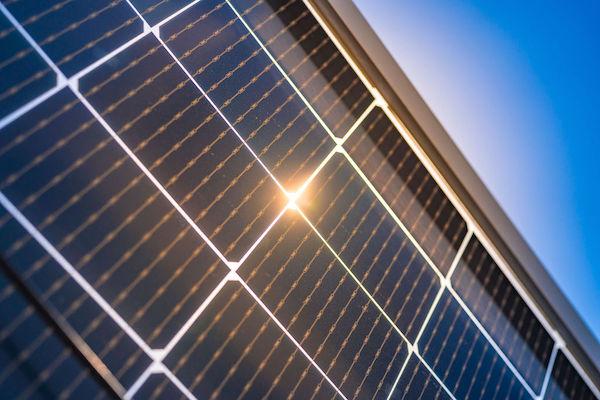This article is sponsored by Enel North America.
As clean energy technologies in the United States continue on a rapid growth trajectory, understanding where they’re headed and what’s holding them back is important for companies even beyond the energy sector. Businesses everywhere have much to gain from evolving their energy strategy alongside the clean energy industry’s growth, development and challenges.
More organizations are mapping out decarbonization and electrification ambitions, often incorporating clean energy technologies into their sustainability strategies. Here are five trends to know and account for in your business.
1. Increasing climate risk creates a need for greater resilience and flexibility
If you haven’t been personally affected by an extreme weather event this summer, you’ve certainly read about plenty of them in the news. With devastating heatwaves, hurricanes, wildfires and floods, it’s felt as if no part of the U.S. was spared.
For business leaders, these climate disasters can spell disruption. In a recent survey from PwC, half of executives acknowledged climate change as a risk to their business. However, only 23 percent have contingency plans for disruptions in the next 12 to 18 months. This shortage of resilience planning is striking. Climate risk increases year over year in the U.S., so organizations should look to take precautions sooner rather than later.
When it comes to disruption caused by grid emergencies, the energy sector is implementing utility-scale solutions for resilience, such as additional generating capacity from multiple technologies, battery energy storage systems and utility-run demand response programs. But these can’t fix the grid overnight, and businesses should take their own measures to ensure their resilience. A resilience strategy that leverages clean energy technologies doesn’t just support operational continuity — it can shield companies from commodity price volatility and support sustainability efforts.
2. Our aging grid holds back the energy transition
The current state of the U.S. power grid plays a huge role in our collective clean energy future. Most of the grid was built in the ‘60s and ‘70s — making it vulnerable to disruptions even as it gets more crowded, creating a massive backlog of clean energy projects waiting to come online.
Earlier this year, the Federal Energy Regulatory Commission approved a robust set of reforms to help remove barriers preventing more than 2,000 megawatts of new energy projects from being interconnected with the grid. This reform was a big step in the right direction. But without an enormous expansion of transmission infrastructure across the country, a fully realized clean energy transition is still out of reach.
The ripple effect for many organizations could mean missed decarbonization targets, amplified climate risk and even more grid disruption as demand and disasters increase. Beyond risk planning, business leaders should explore various paths to decarbonization — expecting a carbon-free grid is not a short-term strategy.
.jpg)
Solar module manufacturing facility in Catania, Italy. Image courtesy of Enel North America.
3. The IRA is not enough without more private capital
The Inflation Reduction Act of 2022 (IRA) was the largest clean energy investment in U.S. history at nearly $400 billion. In the year since the IRA passed, over $270 billion in utility-scale clean energy investments have been announced — more than the previous eight years combined. But recent data shows a slow-down in financing for early-stage projects due to concerns over grid interconnection delays.
With progress on expediting the interconnection backlog, we can hope to see an eventual uptick in renewables financing. Especially considering the strong momentum spurred by the IRA, it’s important for private sector partners to keep funding clean energy projects in the long-term to meet climate goals, address rising electricity demand and support corporate decarbonization solutions such as power purchase agreements. If not, a capital deficit from investors could diminish the impact of federal climate legislation and slow U.S. progress toward a cleaner, more independent energy supply.
4. We need workers to build and maintain new manufacturing and renewables
With clean energy investment surging into the U.S. market post-IRA, job growth is also set to skyrocket. Analysis from the Labor Energy Partnership estimates that the IRA will add close to 1.5 million jobs to the economy by 2030. Now the challenge is this: our supply of green jobs is outpacing the supply of qualified workers.
To overcome this, we need cross-sector collaboration for developing, training and investing in a modern clean energy workforce. That can mean getting involved in STEM education, college scholarships or trade and technical school programs. We also have to consider transferable skills that already exist in workforce and look to train up and reskill workers — especially those in shrinking job sectors.
Organizations outside of the energy sector can support these efforts by getting involved at a local level where they operate. Clean energy buyers can join forces with developers to maximize their local sustainability impact. By partnering with clean energy companies to develop local workforces, companies can support both clean energy progress and socioeconomic opportunity.
.jpg)
Parking lot DC fast charger for electric vehicles in San Carlos, California. Image courtesy of Enel North America.
5. Momentum for next-generation clean energy technologies and EVs is growing
As we head into 2024, a lot of exciting developments are on the horizon for low-emissions technologies. Clean electrification won’t look the same for organizations as it has before.
A big one to watch: higher-efficiency photovoltaics. While we’ve historically grown U.S. solar capacity by installing more solar panels, scientific developments in commercial photovoltaic cells are supporting greater generation efficiency. That means more energy from fewer panels. With the flood of new solar manufacturing capacity in the U.S. over the next several years, we can expect more advanced technology to hit the market. For business facilities, higher-efficiency solar panels will make on-site applications such as rooftop arrays an appealing option for curbing energy bills and carbon footprints.
And, of course, consider electric vehicles. Not only do EV sales continue to break records, but we can expect to see an influx in charging infrastructure throughout the country. PwC estimates the EV charging market could grow nearly tenfold by 2030 to meet demand from the 27 million EVs expected to be on American roads. If organizations haven’t begun to seriously evaluate their plans for electrified transportation, the best time to start is now.
Maintaining sustainable progress
The energy transition is accelerating in the U.S. but also faces increased complexity. For businesses with decarbonization targets and those capitalizing on the economic advantages of clean energy, that translates to the need for a diversified strategy.
In the year ahead, cross-sector and public-private collaboration, sustained private investment and innovation will be key in not only tackling the climate crisis, but also reimagining an electricity system that works for all end users.

